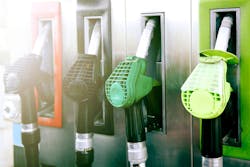MIT researchers demonstrate conversion of waste gas into liquid fuel
U.S. researchers successfully trialed a process that converts emissions from power stations, steel mills and garbage dumps into liquid fuel.
The process uses bacteria to convert waste gases into acetic acid (concentrated vinegar) then an engineered yeast to produce an oil.
Researchers from the Massachusetts Institute of Technology (MIT) demonstrated the process at a pilot plant in China using engineered microbes. It will now be tested at a much bigger facility to see if the process can be scaled up and to evaluate its costs and carbon footprint.
Professor Gregory Stephanopoulos, an expert in chemical engineering and biotechnology at MIT, told the Guardian: “It started just four to five years ago with a post-doctoral project funded by the U.S. Energy Department. We are looking at a very fast timescale [of development]. We have pieced the system together into an integrated system, where you put gas in one end and get a liquid fuel out of the other end.”
Details of the research were published this week in the journal Proceedings of the National Academy of Sciences.
The study, ‘Integrated bioprocess for conversion of gaseous substrates to liquids,’ describes the process of converting synthesis gas, or syngas, generated from gasification of coal, natural gas or biomass, into liquid lipids that can be used for biodiesel production.
“The bottom line, if one is aiming at making fuels from renewable resources, is we need to look very carefully at low-cost feedstocks,” Prof. Stephanopoulos said.


